John Ware, Canada’s Legendary Cowboy (1845-1905)
This Article is dedicated to Nettie Ware (1893-1989)
“a man of unquestioned honesty and agreeable nature…[who] boasted the rare distinction of never having been thrown from a horse. At roughriding and roping he was an expert’’ (Turner, 1950, pg. 461).
Sometimes in life you are at the right place and the right time to met the most amazing people. No, I’m not talking about the day I met a former Canadian Prime Minister, which was rather underwhelming. I’m talking about the time I met Miss Janet “Nettie: Ware.
When I lived in Calgary, Alberta during the late 1970s, I was honoured to have spent many an afternoon in my landlady’s kitchen chatting to her best friend Nettie Ware. (My landlady and Nettie were longtime friends from Vulcan, Alberta.) Often she would talk about her father John Ware.
At the time I had no idea who John Ware was but after some prompting from my landlady, Nettie was happy to share her stories about her father, who as it turned out was one of the most famous of Canadian cowboys.
Many books and videos have been made about John Ware but this is the story about how I came to learn about John Ware. The Blackfoot Indians called him “Matoxy Sex Apee Quin” because they thought he was related to the spirit world. He was undoubtedly one of the best cowboys ever to ride on the prairies during 19th century Canada. To me, What makes his story more amazing than his skills, which were extraordinary, is his backstory. He was a freed slave who made western Canada his home and through his character became a hero to many black Canadians.
Learning about John Ware - from his daughter
John Ware was a cowboy who lived in the latter decades of the nineteen century in Alberta, Canada. He was not some Hollywood imaginary gun-slinging desperado. He was a professional, business-like cowboy who was highly respected amongst his peers not only because of his skills as a cattle hand but also because of his character and deportment. What made John Ware unique amongst the many cowboys of Alberta was were he was from and what he became in his new home.
“Go west young man”
When I was a teenager, 17 year old to be precise, I joined many young men who heard the call to “Go West Young Man”. Well, truth be known, it was more a request from my friend to drive him back home to Calgary, Alberta. And so I did.
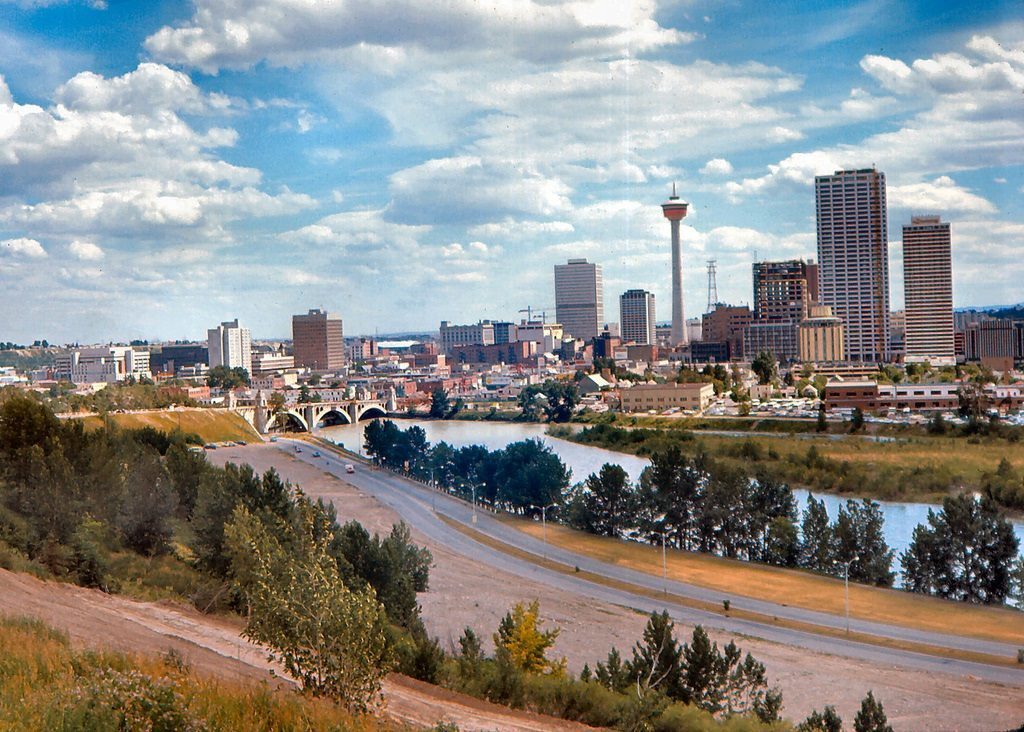
I had the privilege of living in Calgary, Alberta during its boom years between From 1977 to 1979. The city was thriving. It seemed everything was possible. Living there was like magic to me. Although Ontario has mountains, I had never seen mountains as high as the Rockies. I had never seen a sky as blue and never-ending as I saw there. And I learned first-hand the vastness and sheer magnificence that is Canada. Those years were a formative time for me as I moved from suburban Toronto to the “wild west” of Calgary. Well, it wasn’t all that wild but it was new and wonderful to me.
While there, I determined to learn mountain climbing and spend some time hiking in the wilderness.

One day I decided to climb Mount Lady MacDonald in Cranmore, Alberta. It was exhilarating, adventurous, challenging and fun. That was until I discovered I had forgotten to bring a flask of water with me. Having managed to find some snow behind some bushes, I hydrated myself, sort of.
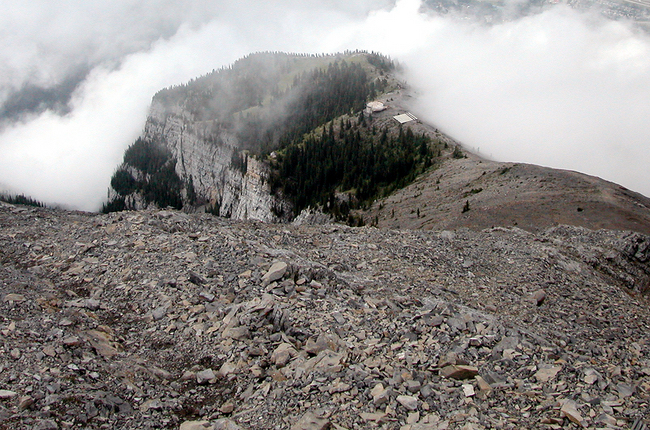
After reaching the summit and taking a few photos, I literally ran down the slopes using my boots as brakes and finally made it to the base of the mountain. I then ran towards the townsite (and across a four lane highway) hoping to find a source of water. I stumbled upon a church and finding an outdoor tap in the back of the building, I drank as much as I could.
But I digress. This isn’t the point of this article, but its a fun story.
Meeting Miss Janet “Nettie” Ware
While living in Calgary, I stayed in a rooming house in the south-west of the city belonging to a very kind elderly woman. She rented out the rooms as well as basement apartments. I quite enjoyed chatting with my landlady and I would share a cup of tea with her and she would tell me about her life in Alberta.
At least once a week she would have a visitor, her best friend Janet Amanda “Nettie” Ware. As Nettie, as she liked to be called, was there so often, I got to know her quite well. I was often invited to join them over a cup of tea. She was an elderly woman and I quite enjoyed chatting with her. Both Nettie and my landlady were retired teachers from Vulcan, Alberta. In time I looked forward to Nettie’s visit and joined them in the kitchen over a cuppa. Nettie would tell stories about the early days of Alberta and especially stories about her past.
And what a past she had!
It is through her that I learned about the origin story and exploits of her father, John Ware.
In the following photo you can see John Ware and his family with Nettie sitting on her mother’s lap and their second child standing next to John.

I spend three years in Calgary eventually moving to the United States to attend University, oddly in the entirely opposite direction that John Ware had travelled more than 100 years previously. However, life moved on and I slowly forgot about this episode in my life as I got busy with new things in Pennsylvania and New England.
A few years later I moved back to Canada to attend a Canadian University. After studying Canadian literature, especially from Western Canada, it occurred to me that I ought to see what had happened to Nettie Ware. Initially, I didn’t get very far. Later on while doing some more in-depth research for this blog post, I was saddened to learn that Nettie Ware had passed away in 1989 on her ninety-sixth birthday. This meant she would have been in her mid-eighties when we had met at the rooming house in Calgary.
Who was John Ware?
John Ware was born into slavery in 1845 before the American Civil War. Like many former slaves from the American south, he was quick to leave the places that reminded him of that abusive time when humans were treated as animals to be bought or sold. The degradation of African-Americans under slavery remains to this day a stain on the history of the United States. Nothing can repair the stolen lives of millions of humans whose sole purpose was to generate income for non-slaves who were almost always white. John Ware was born expecting to become another cog in that wheel of injustice.
The Emancipation of slaves that followed the North’s victory in the Civil War included John Ware and his family. Somehow, he was able to find his way to Texas and find work as a cattle hand. This is what we would call a “Cowboy”. At over 6 feet tall and weighing a strong 230 lbs, he took to his tasks easily and became very proficient at handling great herds of cattle.
For those who don’t know the story of Mr. John Ware, he rightly deserves his stellar reputation. His cowboy skills were legendary and contrary to the popular Hollywood image of cowboys, he behaved courteously and gentlemanly. He led an honest, good life and was a loving father to his two children.
His work as a cowboy was extremely difficult. The working conditions were hard and in those days if he was injured or disabled he could not expect much in the way of assistance, except by neighbours or friends.
A cowboy’s work is never done
What was the work of a cowboy anyway? They were responsible for the well-being of the herd of cattle under their care. They were responsible for taking herds from ranches to ranches, if they were sold to another rancher. And they had to fed and protect them as they grazed.
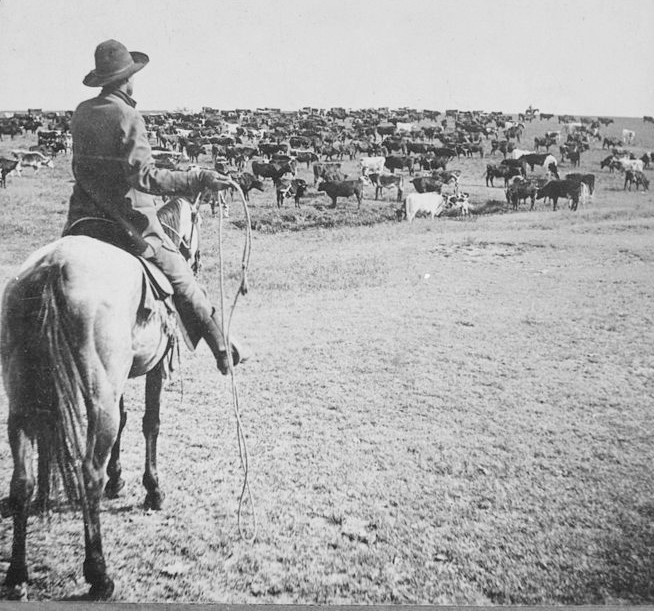
Sometimes the herd had to be moved to new pastureland for better feeding. And they had to be tough enough to protect the herds from poachers and more usually from wild animals. In the days when fences were unheard of in the western plains, they had to keep cattle from wandering away from the main herd.
Cattle drive to Alberta
John Ware often went on cattle drives which were essential for bringing a set number of head of cattle to the purchasers. Ranchers on the northern plains bought hundreds of head of cattle from suppliers in Texas (presumably Texas Longhorns that could survive long drives through arid land) and it was the job of cowboys to deliver them. In 1882 he made his way to Idaho on a cattle drive at the age of 37. While there he joined a cattle drive that was bringing a herd of cattle across the border to a buyer in Alberta.
Nettie Ware explained to me some lesser known facts about cattle drives. For instance, part of a cowboy’s job during a cattle drive was to ensure the cattle didn’t stray off or turn back. The herd of cattle is basically running. Depending on the size of the herd, it would have numbered in the hundreds. To keep these cattle going the right direction, it was important that the lead cattle head in the direction the cattlemen wanted them to go. It wasn’t quite like herding cats, but in a wide open land it was not an easy task. One tactic was to fire a shot just in front of the lead cattle to make them turn, at the same time being careful not to injure them. If that didn’t work, the cowboy had to take his horse and gallop in front of the herd and force them to turn using the horse - a very dangerous and life threatening act if the cattle didn’t behave.
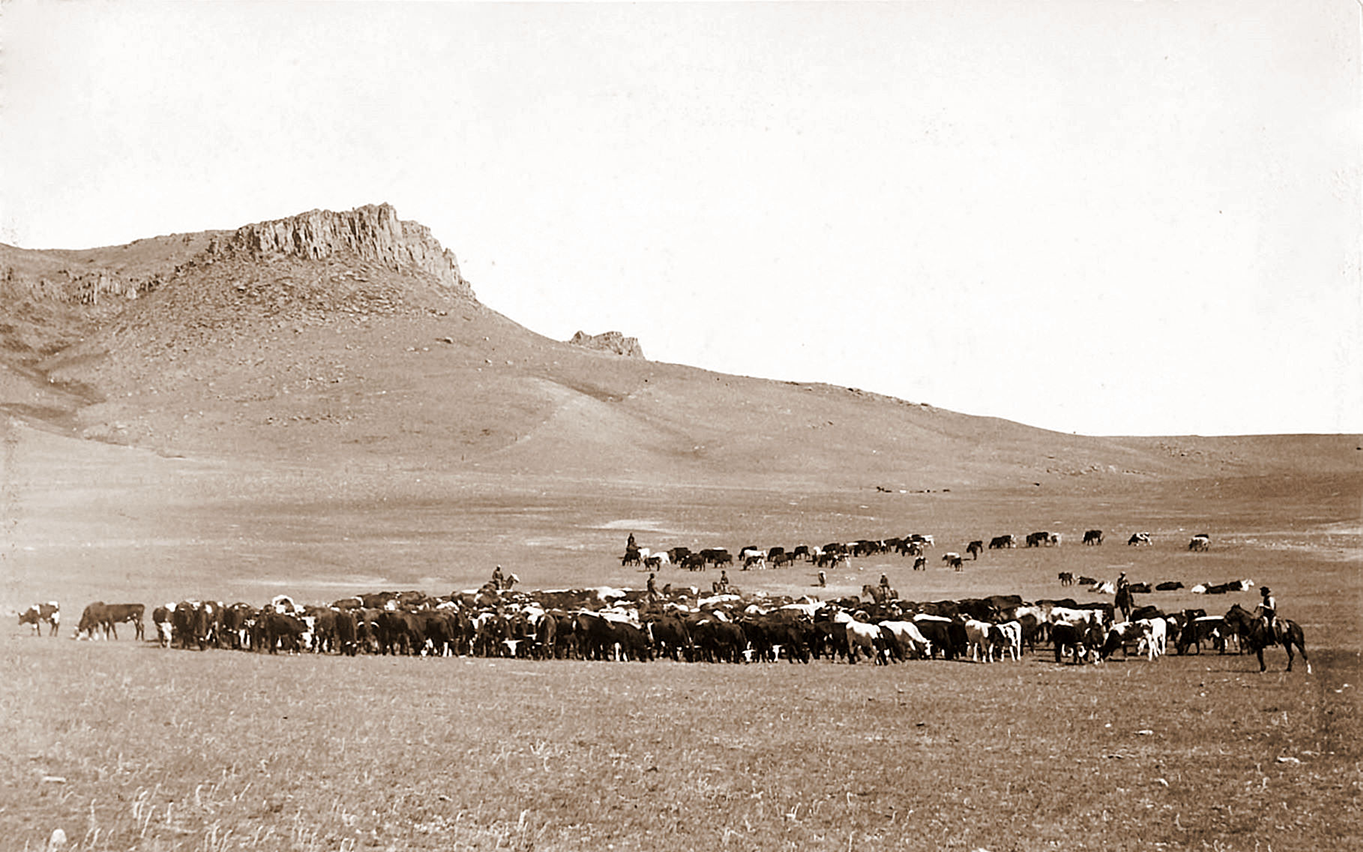
Of course, at the end of the day a cowboy’s work wasn’t done. During the night he had to keep watch for rustlers (people who steal cattle) and wolfs who were more likely to attack the herd as they grazed.
This was the life of a cattle hand. It required stamina, strength and courage and an ability to quickly make tough decisions. This was the life of John Ware as he brought the product to a buyer in Alberta, Canada.
John Ware’s new home in Alberta
At the end of John Ware’s cattle drive into Alberta and after he delivered the herd to the buyer, he went to the dusty cattle town of Calgary, Alberta. Having taken a look at the place, the people and the opportunities, he decided to settle in Alberta.
This seemed like a good move considering Alberta had never experienced slavery. This territory was just opening up for settlement. The North-West Mounted Police had established “law and order” in the territory that would become Alberta. They attempted to protect the First Nations tribes from unscrupulous sellers, especially American whiskey traders who would sell tampered booze to the Blackfoot and other tribes.
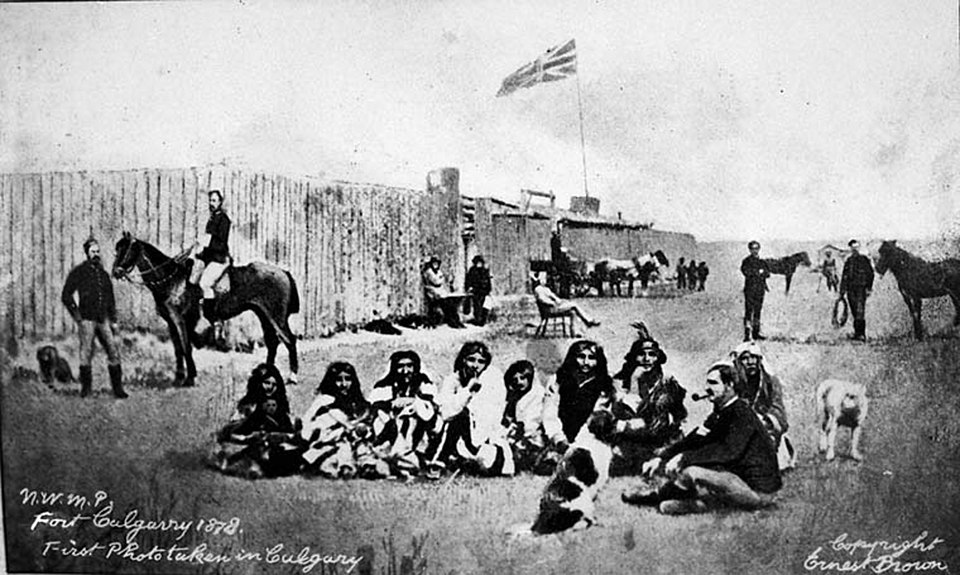
With fairly good relations between the white settlers and the First Nations tribes, John Ware most likely faced less racial discrimination there than he would have experienced in the American south.
So, Alberta was his new home.
John Ware earns a good reputation amongst Albertans
He quickly found steady employment at the Bar-U and Quorn ranches south of Calgary in the area north of today’s Lethbridge. In an era where roughness, dishonesty, bullying and lawlessness seemed normal, Mr. Ware showed stood out due to his honesty, skill, hard work and decency. He was known as
“a man of unquestioned honesty and agreeable nature…[who] boasted the rare distinction of never having been thrown from a horse. At roughriding and roping he was an expert” (Turner, 1950, pg. 461).
This made him valuable to the ranches where he worked and other ranch hands respected him for his abilities.
His skills at bronco busting were legendary. Bronco busting is not for the faint-hearted. It is a bone jarring activity and was a vital part of ranching in those days to prepare a steer for branding. A steer needed to be captured and held so it could be “labelled” by a ranch’s “brand” which was burnt into the hide of the animal near it’s business end. This brand ensured the owner of the animal could be clearly identified if it was rustled or stolen. Most significantly, the brand could not be taken off without killing the animal.
According to his reputation, in an era when the demanding skills of a cowboy were highly valued, John Ware’s skills exceeded them all in Alberta. When John Ware entered an establishment in Calgary, everyone knew him.
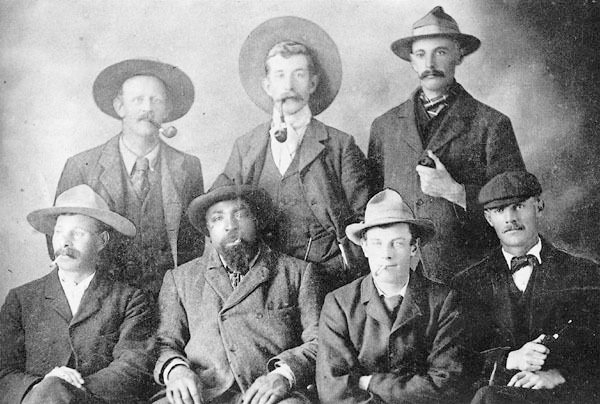
The legend of John Ware
Because of his courage and enormous strength, the First Nations people called him “Matoxy Sex Apee Quin” (which means bad black white man) and wondered if he had a connection to the spirit world.
Now, legends being legends, lots of yarns had been twisted making John Ware into a giant like Paul Bunyan. Some of these include:
John Ware discovered Turner Valley oil fields with a flick of a match
John Ware was the last rancher to use a Calgary bridge as a cattle crossing
John Ware was never thrown from a horse
He invented steer wrestling 20 years before the Calgary Stampede
Camp cooks profess to feeding him on over-sized platters and to watch him eat sandwiches the size of a family bible
How much of these legends are true, well, you decide. It is quite possible that they are all true.
Nevertheless, it is true that he was the last to use a Calgary bridge as a cattle crossing. It was forbidden to drive cattle through Calgary - a perfectly reasonable law - except when your new ranch is on the opposite side of Calgary from your old ranch. That was exactly John Ware’s problem. He had bought a new ranch but had to get his herd there. But Calgary was in the way. What to do? He brought his herd to the edge of the Bow river and waited until nightfall and in the middle of the night he charged his cattle across the bridge and into history.
He was the last rancher to use a Calgary bridge as a cattle crossing.
The legacy of John Ware
I should mention that Nettie Ware did not speak much about that the cowboy part of his life. She mostly spoke about John Ware as her father.
Nettie Ware told me that he was a good man and a good father. He had raised his children to be honest and taught them to respect one another and to “treat one another as they would like to be treated”. Certainly, based on my memories of Nettie, John Ware had done a good job of raising his children.
In 1882, John met a woman from Toronto named Mildred Lewis (I knew there was a Ontario connection somewhere). They married and settled on a ranch just north of the village of Duchess, Albert which is along the Red Deer River. Unfortunately, his homestead was washed away in the spring flood of 1902.

John Ware rebuilt the cabin on higher ground overlooking a stream which today is called Ware Creek. By then they had five children. Three years later in 1905, sadly, Mildred Ware died of pneumonia. Tragically, that same year John Ware died when his horse tripped after stepping into a gopher hole. The horn of the saddle killed him instantly. Nettie and her four brothers and sisters were bereaved of both of their parents in the same year. Nettie was only 12 years old when both her mother and father passed away.
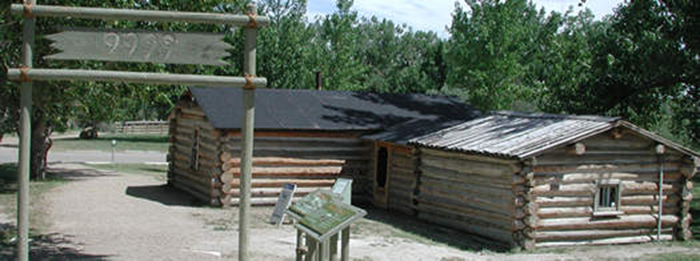
I can’t recall what Nettie said had happened to her and her siblings after her parents died. John Ware’s children would certainly have been taken care of even as he had provided good service to many others. However, I do know that Nettie settled in Vulcan, Alberta. I believe she became a teacher. It was during her time in Vulcan that she got to know my landlady who eventually moved to Calgary to start a rooming house for students.
Nettie remained in Vulcan, Alberta and frequently visited my landlady, which to me was very fortunate.
Hero to Canadians of African origin
John Ware was indeed a legendary cowboy, a skilled bronco buster and most importantly a gentleman and good family man.
John Ware died 12 days after Alberta entered into confederation within the new nation of Canada. And it does seem fitting. John was a decent man. He was highly respected and a very talented - even legendary - cowboy, and he was black.
His colour did not matter in his new home. What mattered was his abilities and his kindness to others. He became a symbol of the tolerance and decency with which his new home, Canada, has and continues to aspired to. And he has become a hero to Canadians of African origin.
Janet (Nettie) Ware honoured by the Province of Alberta
Eventually, Nettie Ware began traveling throughout Alberta speaking about her father to school children. In 1971 the Province of Alberta honoured her with “Alberta’s Pioneer Daughter of the Year” . Nettie kindly gave me a book about the history of John Ware and she even signed it for me. Somehow, frustratingly, I lost it in my travels. (Update. I managed to find another copy and it sits proudly in my bookcase of Canadian classics.)
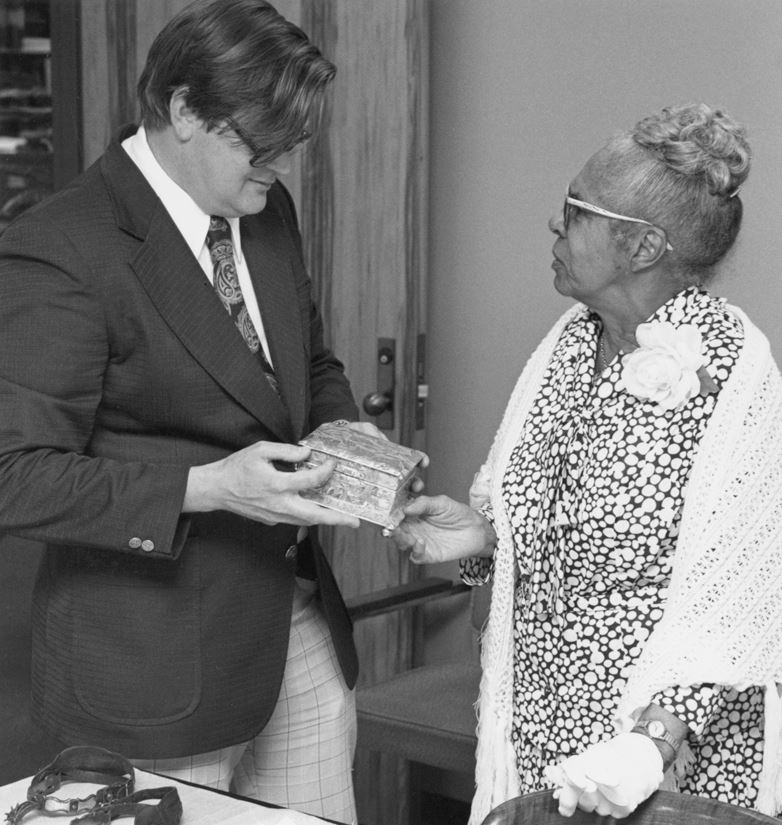
As things go, I lost contact with both Nettie Ware and my former landlady but I have often told my story about meeting Nettie Ware and learning about this great Canadian cowboy.

This story would not be complete without my small memorial to Janet Amanda “Nettie” Ware. She rests in peace next to her sister Mildred in Vulcan, Alberta.

An important (coincidental) connection with Nettie Ware: She died in 1989, which was the year I started University in Waterloo, Ontario. The year I first met her was 1978. That was the year I had begun an adult education program in Calgary to finish my high school which would later allow me to enter University.
Epilogue
It is an important story to keep alive. It is part of the heritage of Canada. Canadians of African descent can be rightly proud of John Ware, as can all Canadians. From Canada’s founding in 1876, despite some serious mistakes along the way, Canada has striven to be a home for all people, no matter their colour or nationality. For John Ware, Canada represented freedom - a freedom from racism and intolerance. And Alberta has been proud of one of it’s own of their own who showed others what decency and honesty and hard work is all about.
Further Reading
Online resources
Here are some online resources for further reading. Googling John Ware will retrieve lots of information on John Ware.
- Find a Grave Memorials: Janet Amanda “Nettie” Ware
- CowboycountryTV: Summary of the life of Nettie Ware
- Wikipedia: John_Ware_(cowboy)
- Canadian Encyclopedia: John Ware
- Youtube: The Canadians: John Ware
Books about John Ware
- John Ware’s Cow Country by by Grant MacEwan. Book written by Alberta’s former Lieutenant Governor of Alberta. This is the one that I lost (with Nettie’s signature!).
- The Story of John Ware by R. Breon, V. Cudjoe, M. McLoughlin (Illustrator) Children’s illustrated book about our famous cowboy.
Author’s Note
A previous version of this article was provided to Oxford University Press Canada for use in their Canadian high school text book Inside Track 1.